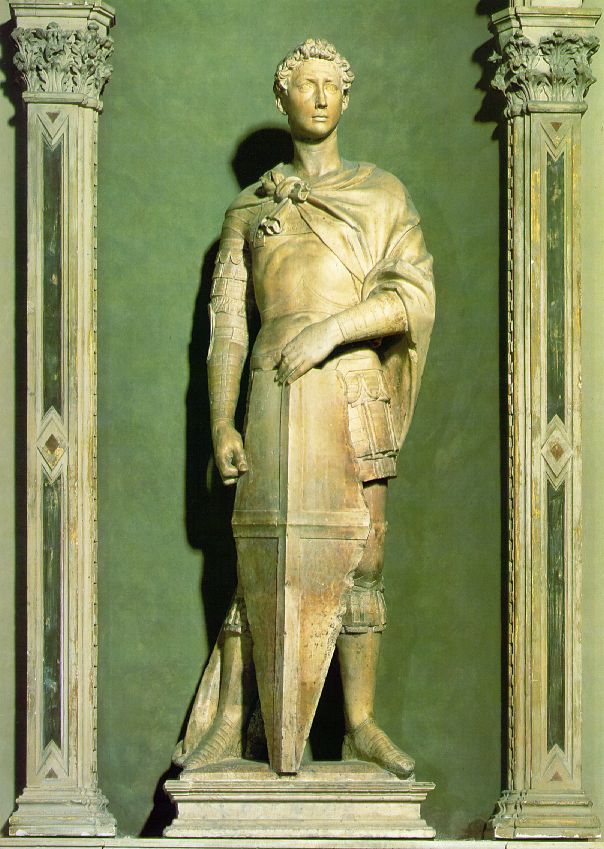One of the Florentine sculptor's earlier works (c. 1416-1417), Donatello's statue of St. George reflects the first-hand influence of classical models on Renaissance aesthetics. Like his friend, the architect Filippo Brunelleschi (1377-1446), Donatello went to Rome to study the ruins of ancient Rome still standing there. In this sculpture, made at the request of the Armorer's Guild of Florence for a niche in the church of Orsanmichele, where it orignally stood, Donatello rendered the saint in the dress and posture of a Roman centurion. It was the first piece of free-standing sculpture carved since classical times; it was presented the human body as a self-activating organism, the vessel of a particular and dynamic human personality. As the Tuscan biographer Giorgio Vasari (1511-1574) described the statue, Donatello's St. George expressed "in the head of this saint the beauty of youth, courage and valour in arms, and a terrible ardour. Life itself seems to be stirring vigorously within the stone." Marble, Height 209 cm; Museo dell'Opera del Duomo, Florence. Image source: Artchive.
